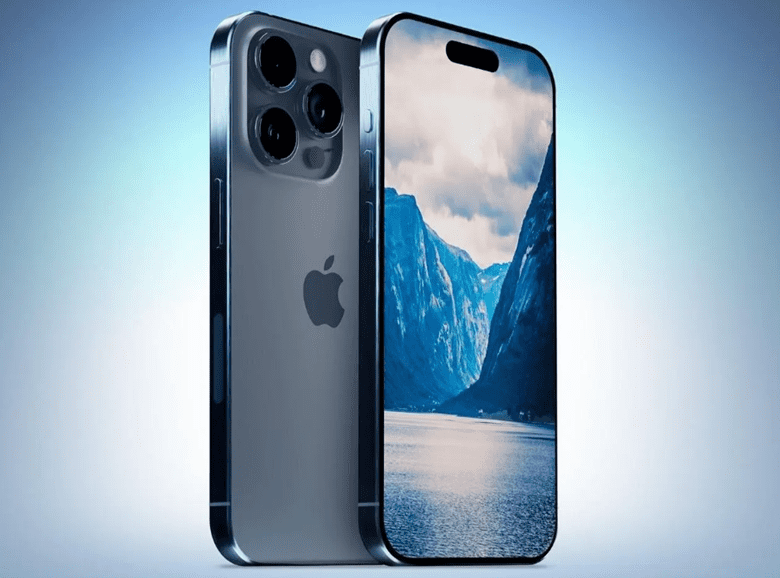In today’s blog, we will explore the growth and history of Apple, and the latest news about the iPhone 15.
Apple Inc., founded by Steve Jobs, Steve Wozniak, and Ronald Wayne in 1976, has experienced remarkable growth over the decades. The company originally started as a computer manufacturer, but it has since evolved into one of the world’s most influential and valuable technology companies, known for its range of consumer electronics, software, and services.
History of Apple Inc.
1976
Founding of Apple – Apple Inc. was founded by Steve Jobs, Steve Wozniak, and Ronald Wayne in a garage in Los Altos, California. They started by building and selling the Apple I personal computer kit. Wayne, the third co-founder, sold his share back to Jobs and Wozniak just a few weeks after the company’s inception.
1977
Apple II – The Apple II, introduced in 1977, was the company’s first mass-produced personal computer. It was a huge success and played a significant role in the growth of the personal computer industry.
1980s
Macintosh and Lisa – In 1984, Apple introduced the Macintosh, which was the first commercially successful personal computer to feature a graphical user interface (GUI). However, it was expensive and faced competition from IBM-compatible PCs. Around the same time, Apple also released the Lisa, a more expensive computer that was ahead of its time but did not achieve widespread success.
1985-1997
Steve Jobs Leaves and Returns – A power struggle within the company led to Steve Jobs’ departure from Apple in 1985. He went on to found NeXT Computer and later Pixar Animation Studios. During his absence, Apple faced declining market share and struggled with various product releases.
1997
Return of Steve Jobs – Apple acquired NeXT in 1997, bringing Steve Jobs back to the company as an advisor. He soon became CEO and began the process of revitalizing Apple.
Late 1990s
iMac and the Turnaround – Apple released the colorful iMac in 1998, which was a major success and marked the beginning of Apple’s resurgence. The iMac was followed by other iconic products like the iBook and Power Mac G4.
2001
Introduction of iPod – In 2001, Apple introduced the iPod, a revolutionary portable music player. The iTunes Store followed in 2003, creating a digital music ecosystem that transformed the music industry.
2007 and 2010
iPhone and iPad Era – In 2007, Apple unveiled the iPhone, a device that redefined the smartphone industry. The iPad, introduced in 2010, revolutionized the tablet market. These two products solidified Apple’s position as a technology giant.
2011
Steve Jobs’ Passing – Steve Jobs passed away in 2011, but Apple continued to innovate under the leadership of Tim Cook, who took over as CEO.
Present
Apple has continued to expand its product lineup, including the Apple Watch, AirPods, and a growing range of services such as Apple Music, Apple TV+, and Apple Arcade. The company also made strides in sustainability and privacy initiatives. Apple has consistently been one of the world’s most valuable and profitable companies, with a strong global presence and a loyal customer base.
Throughout its history, Apple has been known for its design-focused approach, commitment to user-friendly technology, and a dedication to creating products that seamlessly integrate hardware, software, and services. It has had a profound impact on the technology industry and has shaped the way people interact with and use technology in their daily lives.

Growth of Apple Inc.
Apple Inc. has experienced a remarkable journey of growth since its founding in 1976. Initially created by Steve Jobs, Steve Wozniak, and Ronald Wayne, Apple began as a modest venture with the introduction of the Apple I computer. However, it was the release of the Apple II in the late 1970s that marked the company’s first major success, firmly establishing it in the burgeoning personal computer industry.
As the 1980s rolled on, internal conflicts and external competition began to challenge Apple’s position. This period of turmoil culminated in Steve Jobs’ departure from the company in 1985. Over the following decade, Apple struggled with various product releases and declining market share, facing formidable competition from IBM-compatible PCs.
Apple’s fortunes began to change dramatically in 1997 when Steve Jobs returned to lead the company once again. The acquisition of NeXT Computer, a company Jobs had founded during his absence, paved the way for his return. Under his visionary leadership, Apple introduced the colorful iMac in 1998, marking the start of a renaissance. This innovative product, along with subsequent releases like the iPod, iPhone, and iPad, catapulted Apple to unprecedented heights of success.
The introduction of the iPod in 2001 and the subsequent launch of the iTunes Store in 2003 revolutionized the music industry and set Apple on a path toward becoming a technology giant. The iPhone’s debut in 2007 redefined the smartphone market, while the iPad, introduced in 2010, similarly transformed the tablet industry.
Despite the passing of Steve Jobs in 2011, Apple has continued to thrive under the leadership of Tim Cook. The company has expanded its product portfolio to include the Apple Watch, AirPods, and a growing suite of services such as Apple Music, Apple TV+, and Apple Arcade. Additionally, Apple has made significant strides in sustainability and privacy initiatives.
Today, Apple stands as one of the world’s most valuable and influential technology companies, known not only for its innovative products but also for its commitment to design, user-friendly technology, and seamless integration of hardware, software, and services. Its journey from a garage startup to a global technology giant is a testament to the power of innovation and vision in the world of business and technology.
iPhone 15 Latest News

Apple introduced its iPhone 15 series in addition to a significant update during its September keynote event Tuesday (CNN).
With the iPhone 15, the business verified speculations that it would convert from its own lightning charging connector to USB-C. As a result, consumers will be able to charge their iPhones, iPads, and Mac laptops using the same wire.
The press conference is being held at Apple’s corporate headquarters in Cupertino, California, as suggested by the “wonderlust” tagline.
The USB-C announcement this year is the biggest change to the iPhone’s design in 11 years, even if the annual iPhone event has grown formulaic over the years, announcing minor tweaks to battery life, camera systems, and screens. The modification may potentially simplify the charging procedure for numerous brands and gadgets. Apple made the adjustment in an effort to give customers more justification for upgrading their iPhones. Apple’s sales decreased for the third consecutive month in December. Due to fewer device updates, iPhone revenue for the quarter came in at $39.7 billion, representing a 2% year-over-year reduction.
iPhone 15 Release Date
In an effort to outperform earlier models, the new iPhone is expected to have new features like a new camera, a new charging port, and lighter-weight material.
As for the iPhone 15 release date, the new iPhone will be released to markets such as the USA, UK and India on September 22, 2023.
You can pre-order from Apple’s website starting at 5:00AM PDT this Friday (September 15), and they will appear in stores on September 22.
iPhone 15 Pricing
The price of the iPhone 15 is one of the few items that is still uncertain, however many, including Forbes, are speculating that it may be as follows:
iPhone 15 – starts at $799
iPhone 15 Plus – starts at $899
iPhone 15 Pro – starts at $1,099
iPhone 15 Pro Max – starts at $1,299
iPhone 15 Tech Specification
iPhone 15
- A16 Bionic processor (6-core CPU, 5-core GPU)
- 6.1-inch 2556×1179 460ppi Super Retina XDR display
- Dual-lens rear camera: 48MP f/1.6 Main, 12MP f/2.4 Ultra Wide; up to 2X optical zoom
- 12MP f/1.9 front camera
- Smart HDR 5
- 128/256/512GB storage
- Estimated battery life: Up to 20 hours video playback
- Fast charge: Up to 50% charge in 30 minutes with 20W adapter
- Wi‑Fi 6, Bluetooth 5.3, 5G
- USB-C charging/data connection
- IP68 dust and water resistance (maximum depth 6m up to 30 minutes)
- 5.81 x 2.82 x 0.31 inches (147.6 x 71.6 x 7.8mm)
- 6.02 ounces (171 grams)
iPhone 15 Pro
- A17 Pro processor (6-core CPU, 6-core GPU)
- 6.1-inch 2556×1179 460ppi Super Retina XDR always-on display with ProMotion
- Triple-lens rear camera: 48MP f/1.78 Main, 12MP f/2.2 Ultra Wide, 12MP f/2.8 Telephoto; up to 3X optical zoom
- 12MP f/1.9 front camera
- Smart HDR 5
- 128/256/512GB/1TB storage
- Estimated battery life: Up to 23 hours video playback
- Fast charge: Up to 50% charge in 30 minutes with 20W adapter
- Wi‑Fi 6E, Bluetooth 5.3, Thread, 5G
- USB-C charging/data connection (supports USB 3)
- IP68 dust and water resistance (maximum depth 6m up to 30 minutes)
- 5.77 x 2.78 x 0.32 inches (146.6 x 70.6 x 8.25mm)
- 6.60 ounces (187 grams)
Conclusion
Apple Inc. has undergone a remarkable journey of growth and innovation since its founding in 1976. From its early days as a small startup in a garage, the company has evolved into one of the world’s most influential and valuable technology giants. Key milestones in its history include the introduction of groundbreaking products like the Apple II, Macintosh, iPod, iPhone, and iPad, which have not only shaped the tech industry but also transformed how people interact with technology in their daily lives.
Apple’s success can be attributed to its commitment to design, user-friendly technology, and seamless integration of hardware, software, and services. The return of Steve Jobs in 1997 marked a turning point, leading to a period of renaissance that saw the company consistently push the boundaries of innovation.
While specific product details may change with each new release, Apple’s dedication to innovation, quality, and user experience remains a hallmark of its growth and history. Its journey from a garage startup to a global tech leader exemplifies the power of visionary leadership and a commitment to pushing the limits of what technology can achieve.
As we wrap up our exploration of the iPhone 15, anticipation is building for Apple’s forthcoming flagship device. With its rumored advanced camera features and the formidable A17 Bionic processor, the iPhone 15 appears poised to set new standards in the smartphone industry. It’s important to remember that these details remain in the realm of speculation until the official launch, so we look forward with great excitement to the grand unveiling, recognizing Apple’s well-established track record of pushing the boundaries of innovation.
With the possibility of a curved-edge back glass, the iPhone 15 has the potential to enhance our technological encounters, once again enthralling us. Keep an eye out for the official announcement, as we embark on a new chapter in Apple’s illustrious iPhone history.
You can start and launch an online business today. With a phone, laptop, wi-fi and a reliable platform like Vonza – start making money even while you sleep. Start your 14-day Trial today

